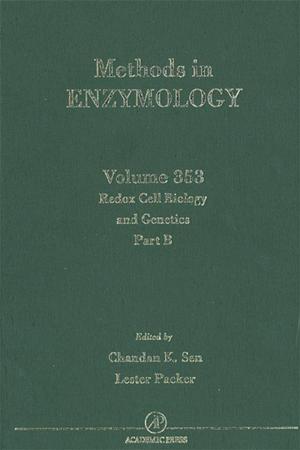Polycomb Group Proteins
Nonfiction, Science & Nature, Science, Other Sciences, Molecular Biology, Biological Sciences, Genetics| Author: | Vincenzo Pirrotta | ISBN: | 9780128098226 |
| Publisher: | Elsevier Science | Publication: | January 1, 2017 |
| Imprint: | Academic Press | Language: | English |
| Author: | Vincenzo Pirrotta |
| ISBN: | 9780128098226 |
| Publisher: | Elsevier Science |
| Publication: | January 1, 2017 |
| Imprint: | Academic Press |
| Language: | English |
Polycomb Group Proteins is a comprehensive volume detailing the mechanisms that are key to the management of genome function in many different contexts, from embryonic stem cells to terminal differentiation. The book discusses the regulation of cell lineages, cell proliferation, apoptosis, X chromosome inactivation, and most major genome programming choices.
In the last few years, the biochemical understanding of PRC1-type complexes has greatly expanded in terms of the number of components involved and the intricacies of their interactions. The functionalities of these various complexes and their components are not all well understood, but recent work has shown an important division of labor and roles in the recruitment of stable binding in the ability to lay the groundwork of histone modifications and in the epigenetic maintenance of repressed states.
In an effort to provide clarity in this topical research area, the book provides a cluster of chapters that deal with variant PRC1 complexes, their taxonomy, their components, their interactions, and what is known of their functions.
- Provides topical coverage on accessory components that are known to be involved in PcG recruitment in Drosophila and their less understood role in mammals
- Includes dedicated sections on PRC1 complexes and PRC2 complexes for quick reference
- Features the role of RNA molecules in different aspects of Polycomb proteins involvement in epigenetic regulation, beginning with the key role of the Xist RNA in recruiting and spreading PcG complexes on the inactive X chromosome
Polycomb Group Proteins is a comprehensive volume detailing the mechanisms that are key to the management of genome function in many different contexts, from embryonic stem cells to terminal differentiation. The book discusses the regulation of cell lineages, cell proliferation, apoptosis, X chromosome inactivation, and most major genome programming choices.
In the last few years, the biochemical understanding of PRC1-type complexes has greatly expanded in terms of the number of components involved and the intricacies of their interactions. The functionalities of these various complexes and their components are not all well understood, but recent work has shown an important division of labor and roles in the recruitment of stable binding in the ability to lay the groundwork of histone modifications and in the epigenetic maintenance of repressed states.
In an effort to provide clarity in this topical research area, the book provides a cluster of chapters that deal with variant PRC1 complexes, their taxonomy, their components, their interactions, and what is known of their functions.
- Provides topical coverage on accessory components that are known to be involved in PcG recruitment in Drosophila and their less understood role in mammals
- Includes dedicated sections on PRC1 complexes and PRC2 complexes for quick reference
- Features the role of RNA molecules in different aspects of Polycomb proteins involvement in epigenetic regulation, beginning with the key role of the Xist RNA in recruiting and spreading PcG complexes on the inactive X chromosome















